A pump is a mechanical device used to move fluids, solids, or slurries from one place to another by mechanical action. Various types of pumps are available in the market according to their working principle and applications. In this article, we will discuss various types of pumps and their applications. We suggest you also read this article on the types of actuators used to control pumps automatically.
How to select a Pump?
Various types of pumps work in different working conditions and applications. The best practice to select a pump is to discuss your requirements in detail with the pump manufacturer. They can guide you and provide you various pump options.
You should consider the following points during the selection of pumps for an application.
- Type of fluid you want to transfer.
- Amount of fluid to transfer.
- Distance or height of fluid transfer.
- Pump capacity and efficiency etc.
Types of Pump
- Dynamic Pump
- Horizontal Axis Centrifugal Pump
- Radial Flow Centrifugal Pump
- Axial Flow Centrifugal Pump
- Mixed Flow Centrifugal Pump
- Vertical Turbine Pump
- Line-Shaft
- Submersible Pump
- Horizontal Mounted Axial Flow Pump
- Horizontal Axis Centrifugal Pump
- Positive Displacement Pump
- Reciprocating Pump
- Plunger Type Reciprocating Pump
- Diaphgram Pump
- Rotary Pump
- Gear Pump
- Lobe Pump
- Reciprocating Pump
Dynamic Pump
The Dynamic pump is also known as a kinetic pump. A kinetic pump works by increasing the kinetic energy of the fluid that increases fluid flow velocity and pressure. As a result, fluid is transferred from one place to another.
Here are the two types of Dynamic pumps available in the market:
- Horizontal Axis Centrifugal Pumps
- Vertical Axis Pumps
1) Horizontal Axis Centrifugal Pump
Horizontal axis centrifugal pump consists of an electrical motor, an impeller, and pump casting. When the impeller rotates, the liquid collects in the casting. As a result, fluid kinetic energy converts into pressure energy. Therefore fluid pressure is increased as it moves from inlet to outlet of the pump.
Types of Centrifugal Pump
We can classify horizontal axis centrifugal pumps into the following three types.
1.1) Radial Flow Centrifugal Pump
Radial flow types of centrifugal pumps in which the impeller pushes the fluid in the direction perpendicular to the pump shaft axis.
These pumps have applications for high head and low discharge requirements. In other words, they are used to pump fluid at heights.
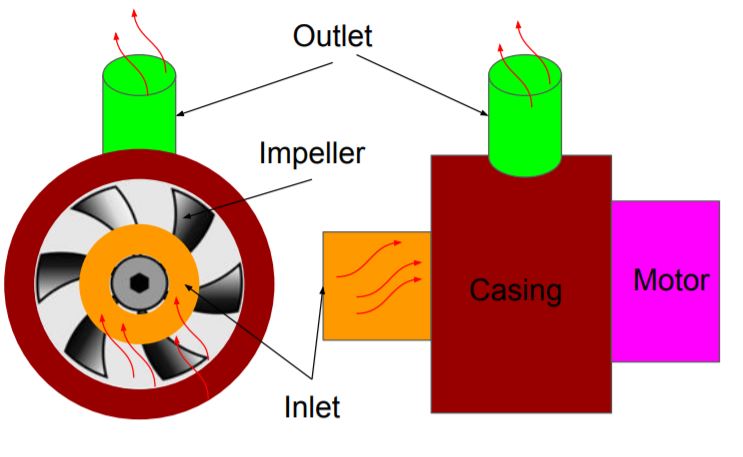
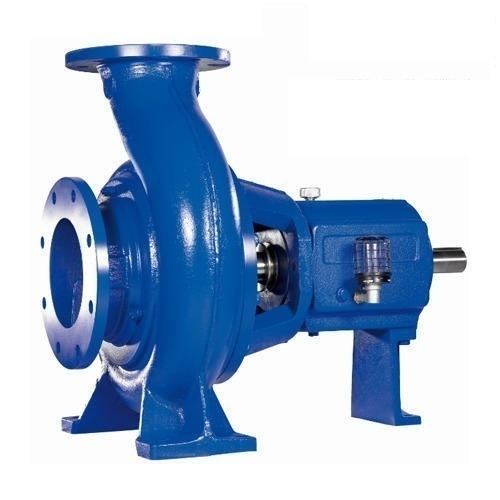
1.2) Axial Flow Centrifugal Pump
Axial flow centrifugal pumps are the pumps in which the impeller pushes the fluid in the pump shaft axis. They have applications for medium head and high discharge requirements.
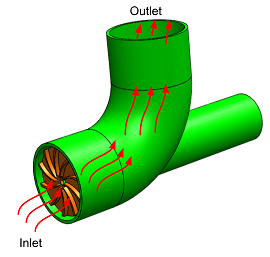
1.3) Mixed Flow Centrifugal Pump
Mixed flow centrifugal pumps are the pumps in which the flow direction is partly axial and partly radial. In other words, the flow is diagonal. They have applications for medium head and high discharge requirements.
Advantages of Centrifugal Pump
Centrifugal Pump has the following advantages.
- Simple in design
- Low cost
- Strong and efficient
- Low maintenance
- Compact in size
- Low power consumption
Disadvantages of Centrifugal Pumps
Centrifugal pump has the following disadvantages.
- Poor suction power.
- Cavitation can cause corrosion in pump impellers.
- Not a good option for viscous fluids.
2) Vertical Turbine Pump
Vertical turbine pumps are centrifugal pumps that work on the same principle as horizontal centrifugal pumps. They have applications where the level of the fluid is high.
They work when fluid enters the pump at the bottom through a bell-shaped suction bell. From the suction valve, fluid moves into the first stage impeller, where fluid velocity increases.
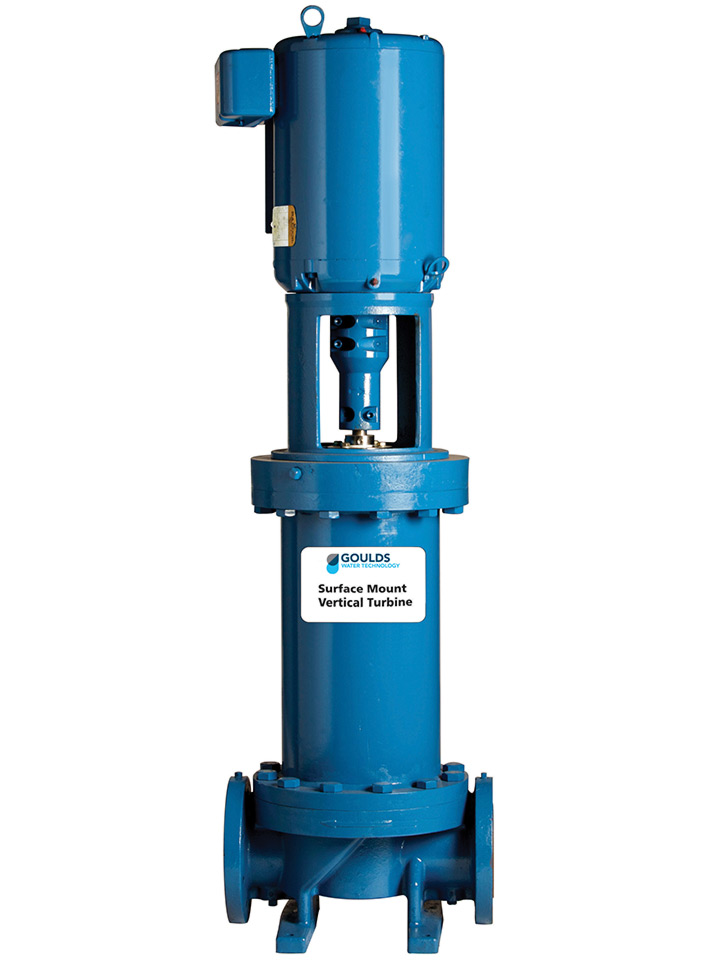
For example, vertical turbine pumps have an application to pump water from underground or from wells. We can classify them into the following types:
- Line shaft pumps
- Submersible pumps
- Horizontal mounted axial flow
Positive Displacement Pump
The Positive displacement types of pumps consist of an expanding cavity at the input and a contracting cavity at the pump outlet. The pump moving element creates contraction and expansion of the cavity.
Liquid flows inside the pump when the inlet cavity expands, the outlet cavity collapses, and so on.
In this way flow of liquid is achieved by generating pressure difference due to expansion and contraction of the pump cavity. We can classify positive displacement pumps into the following types.
- Reciprocating pump
- Rotary type of pump
1. Reciprocating Pump
The Reciprocating type of pump consists of a plunger or membrane that moves up and down to develop pressure and move fluid. Here are the two types of reciprocating pumps.
1.1) Plunger / Piston Type of Reciprocating Pump
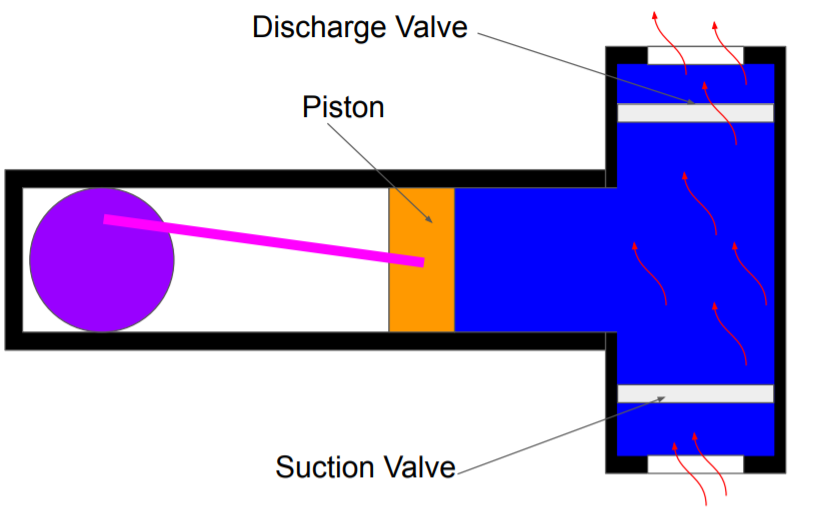
The piston-type reciprocating pump generates suction by the movement of the piston or plunger inside the cylinder. Check valves are used in piston pumps to ensure fluid flow only in one direction. Piston-type pumps are available as single or multi-cylinder pumps.
1.2) Diaphragm Pump
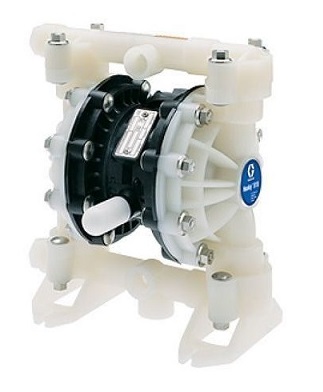
Diaphragm pumps are types of reciprocating pumps that utilize two diaphragms for the movement of liquid. The reciprocating action of the diaphragm is achieved by alternatively supplying compressed air to diaphragms.
Diaphragm pumps can handle various fluids such as chemicals, dry powder, wastewater, food items, etc.
2) Rotary Pump
The Rotary pump utilizes a rotating element to transfer fluid and increase its pressure from inlet to outlet. We can classify rotary pumps into the following types.
2.1) Gear Pump
The Rotary gear pump utilizes two gears for the movement of liquid for every revolution of gear. The gear pump does not have any valve. They are used to pump thick liquids such as fuel and grease oil. We can classify Gear Pump into two types.
- External Gear Pumps
- Internal gear Pump
2.2) Rotary Lobe Pump
A lobe pump works similarly to a gear pump. But lobe pumps utilize rotors driven by an internal gearbox and timing gears to pump fluid from one side to other. They have the advantage of high efficiency, rust-resistant, and reliability.
Advantages of Positive Displacement Pump
Positive displacement pumps have the following advantages:
- Can handle high viscous fluid and solid.
- Constant flow.
- An increase in the system pressure increases pump pressure.
- Highly efficient compared to centrifugal pumps.
Disadvantages of Positive Displacement Pump
- The positive displacement pump can not run dry.
- Need overpressure protection.
We will keep adding more information on various types of pump. Add your suggestions, comments, or questions on various types of pumps and their applications in the comment box. We suggest you also read this article on types of solenoid valves and how they work.
Kirloskar Pumps, General Pump, and Pentair are big names in the pump industry.

Please name the 20 type of pump in plumbing supply